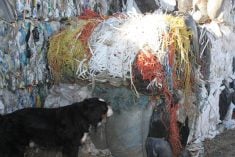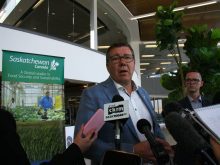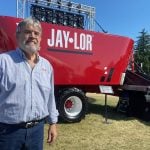As a farmer and a municipal councillor, Mary Anne Lehman has seen Alberta energy companies at their best and worst.
As oil and gas activity soars in Western Canada, Lehman has learned that companies that leave a bad impression in a community make it harder for the next one that wants to set up a project in the area.
“Companies need to show that they see the community and its people as a benefit to their project, not a problem to their project,” she said at the annual meeting of the Canadian Society for Unconventional Natural Gas held in Calgary Nov. 10.
Read Also

Alberta looks for agricultural plastic management input
Alberta provincial government giving agriculture industry a say through survey in shaping future plastics management
Her county is at the heart of the Mannville coalbed methane activity in Alberta’s Fort Assiniboine area.
Her first piece of advice to companies is direct communication with local people. Speak to the municipality about road needs, bring knowledgeable people from head office to meet local residents and do not refer rural people to a website that is often hard to find and navigate.
“When a company is being proactive, in person and here to talk, the whole attitude changes,” she said.
Alberta Energy and Utility Board guidelines say public consultation should happen but it does not say what form it should take.
“People feel more comfortable with a project if they feel they are being kept in the loop,” she said.
Writing a cheque for a community project may not be enough to appease people. Company employees must become involved in community events, speak at schools and hold meetings at convenient times for local people.
Including all stakeholders in an industrial development plan is the ethical business practice of the twenty-first century, said a community liaison officer with Trident Exploration.
“Engagement is the new paradigm for ethically responsible business and doing it poorly can do more harm than good, Kyla Fisher told the meeting.
“You don’t have to agree on the outcome and you don’t have to see eye to eye. More importantly, we need to agree on mutually established guidelines beforehand and in doing so we will create a positive environment.”
The concerns of landowners and other stakeholders were part of a day-long discussion at the meeting, where more than 1,200 people registered to learn about new projects and what can be done to develop them in an orderly manner.
Many agreed on the need for collaboration among companies and a land-use strategy for the province to minimize land, water and air impacts while still allowing energy recovery.
“It is so important for the industry, government and public to work together to reduce cumulative impacts,” said Mary Griffiths of the Pembina Institute, an environmental think-tank related to energy.
Companies are not required to share information to minimize surface impacts, although this was a recommendation from the advisory committee on coalbed methane. The proposals have gone to the Alberta government and further regulations may be applied to unconventional natural gas exploration.
Alan Gardner of the Southern Alberta Land Trust wants land use planning to protect sensitive environmental areas such as ranchland in southwestern Alberta where rich reservoirs of natural gas are located. A provincial framework is necessary with the specifics handled at the local level.
“The fear of the landowners is that we are just getting started,” Gardner said. “It is going to keep going up at an ever increasing rate.”
The conflict stems from a difference in attitude. The industry looks at expanding resource exploration as an accomplishment while landowners view it with alarm as more wells, roads, compressors and pipelines appear, said Norma LaFonte.
She represents the Wheatland Surface Rights Group, which is part of the Coalition for Alberta’s Future that consists of 5,000 families controlling five million acres. She said membership is growing and more people are becoming concerned about what is happening on the land.
“There needs to be more balance to the rights of landowners and a long-term plan for Alberta,” she said.
She wants the 23-year-old Surface Rights Act reviewed, as well as shorter leases so terms can be redone and landowners treated as partners.
EUB chair Neil McCrank said unconventional gas is in the early stages of development and needs to be managed properly. Stiffer rules will come if necessary, although the board is confident current regulations can handle any form of natural gas production under way in the province.
McCrank said there has been misunderstandings about coalbed methane in Alberta and it has raised public opposition.
“I don’t criticize the public if they have a lack of accurate information and take certain positions.”
He said it is up to the EUB, industry and government to ensure the public has the right information.
Companies heavily involved in natural gas development also realize they could lose public confidence and end up with even more rigorous regulations, said Cameron Cline of Encana Resources.
There are frustrations among landowners and eroded confidence in a company’s objectives. The challenge is finding the right balance.
Stakeholders have become more active and knowledgeable while the industry has failed to communicate its intentions properly, said John Squarek, operations manager of the Canadian Association of Petroleum Producers.















